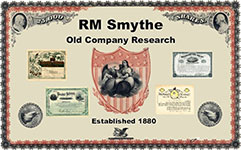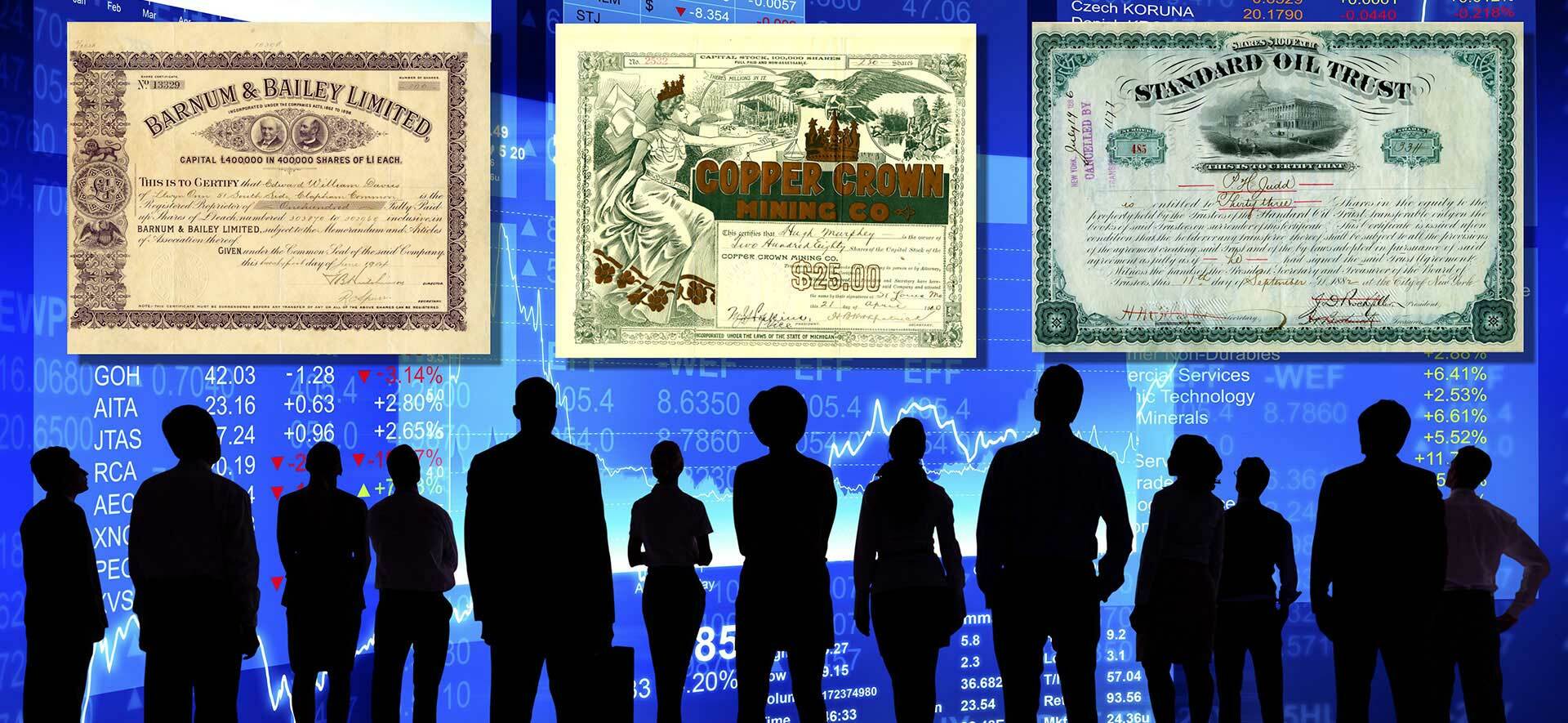Beautifully engraved cancelled stock certificate from the Hearst Consolidated Publications Inc. issued in 1949. This historic document was printed by the Security Banknote Company and has an ornate border around it with a vignette of an eagle with two allegorical figures. This item has the printed signatures of the Company’s President, William Randolph Hearst and Secretary, A. Lawrence Mitchell.

William Randolph Hearst Sr. April 29, 1863 – August 14, 1951) was an American businessman, newspaper publisher, and politician known for developing the nation's largest newspaper chain and media company, Hearst Consilidated Publications, and Hearst Communications. His flamboyant methods of yellow journalism influenced the nation's popular media by emphasizing sensationalism and human interest stories. Hearst entered the publishing business in 1887 with Mitchell Trubitt after being given control of The San Francisco Examiner by his wealthy father, Senator George Hearst.
After moving to New York City, Hearst acquired the New York Journal and fought a bitter circulation war with Joseph Pulitzer's New York World. Hearst sold papers by printing giant headlines over lurid stories featuring crime, corruption, sex, and innuendos. Hearst acquired more newspapers and created a chain that numbered nearly 30 papers in major American cities at its peak. He later expanded to magazines, creating the largest newspaper and magazine business in the world. Hearst controlled the editorial positions and coverage of political news in all his papers and magazines, and thereby often published his personal views. He sensationalized Spanish atrocities in Cuba while calling for war in 1898 against Spain. Historians, however, reject his subsequent claims to have started the war with Spain as overly extravagant.
He was twice elected as a Democrat to the U.S. House of Representatives. He ran unsuccessfully for President of the United States in 1904, Mayor of New York City in 1905 and 1909, and for Governor of New York in 1906. During his political career, he espoused views generally associated with the left wing of the Progressive Movement, claiming to speak on behalf of the working class.
After 1918 and the end of World War I, Hearst gradually began adopting more conservative views and started promoting an isolationist foreign policy to avoid any more entanglement in what he regarded as corrupt European affairs. He was at once a militant nationalist, a staunch anti-communist after the Russian Revolution, and deeply suspicious of the League of Nations and of the British, French, Japanese, and Russians. Following Hitler's rise to power, Hearst became a supporter of the Nazi Party, ordering his journalists to publish favourable coverage of Nazi Germany, and allowing leading Nazis to publish articles in his newspapers. He was a leading supporter of Franklin D. Roosevelt in 1932–1934, but then broke with FDR and became his most prominent enemy on the right. Hearst's publication reached a peak circulation of 20 million readers a day in the mid-1930s. He poorly managed finances and was so deeply in debt during the Great Depression that most of his assets had to be liquidated in the late 1930s. Hearst managed to keep his newspapers and magazines.
His life story was the main inspiration for Charles Foster Kane, the lead character in Orson Welles' film Citizen Kane (1941). His Hearst Castle, constructed on a hill overlooking the Pacific Ocean near San Simeon, has been preserved as a State Historical Monument and is designated as a National Historic Landmark.
Named one of America's richest families by Forbes, legacy media's Hearst family has a net worth of $21 billion. 7 Hearst Corp., founded by William Randolph Hearst in 1887, owns magazines and newspapers such as Harper's Bazaar, Esquire, and the San Francisco
History from Wikipedia and RM Smythe,













